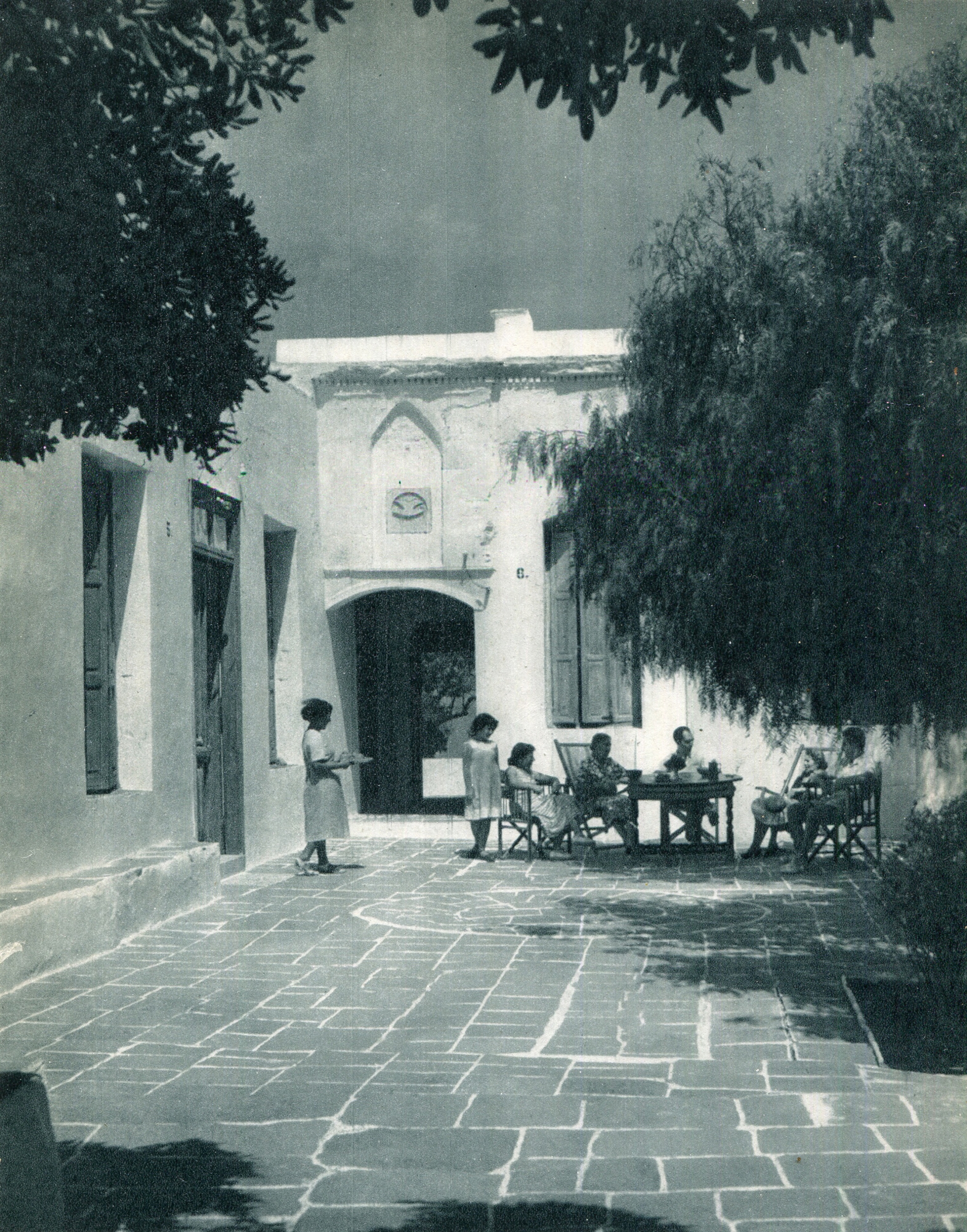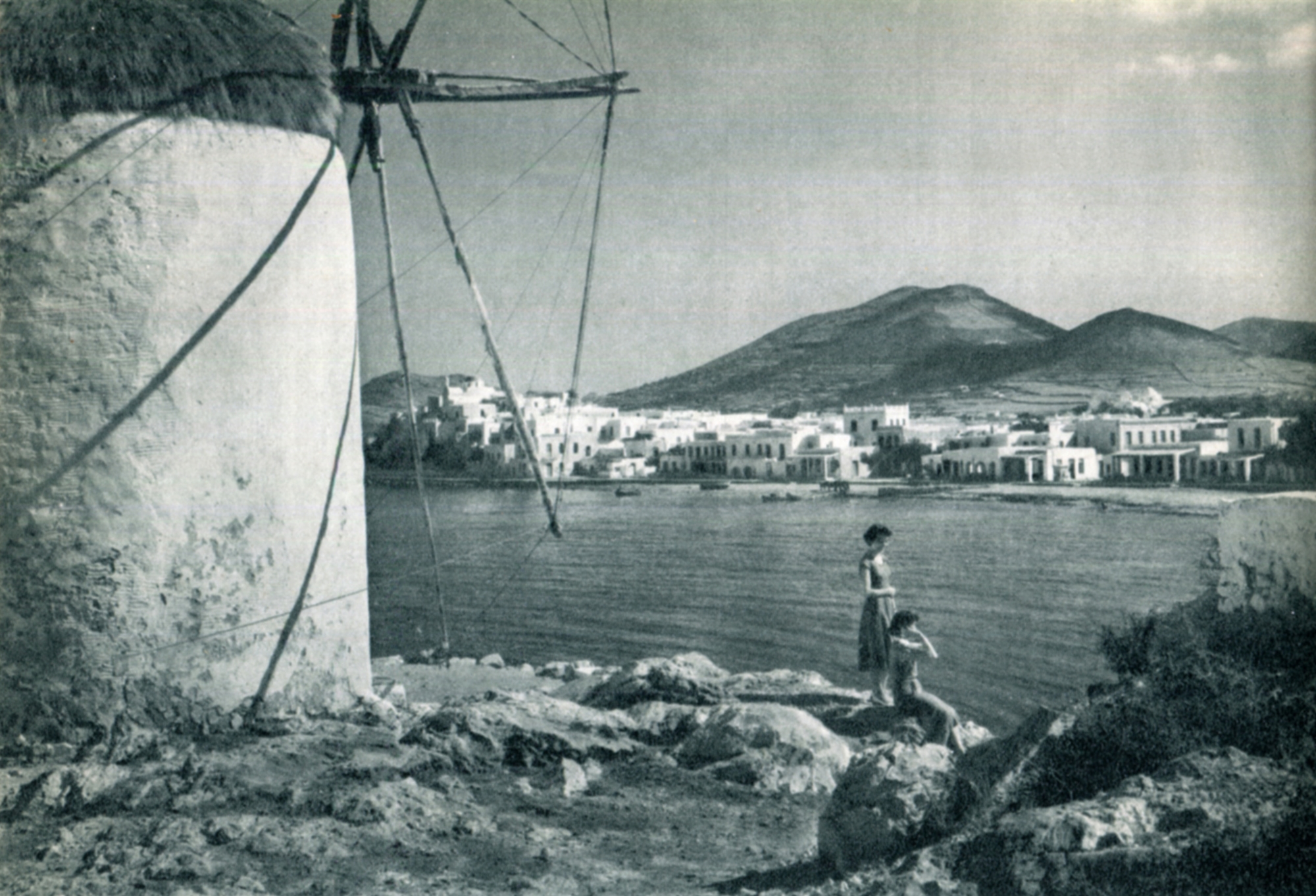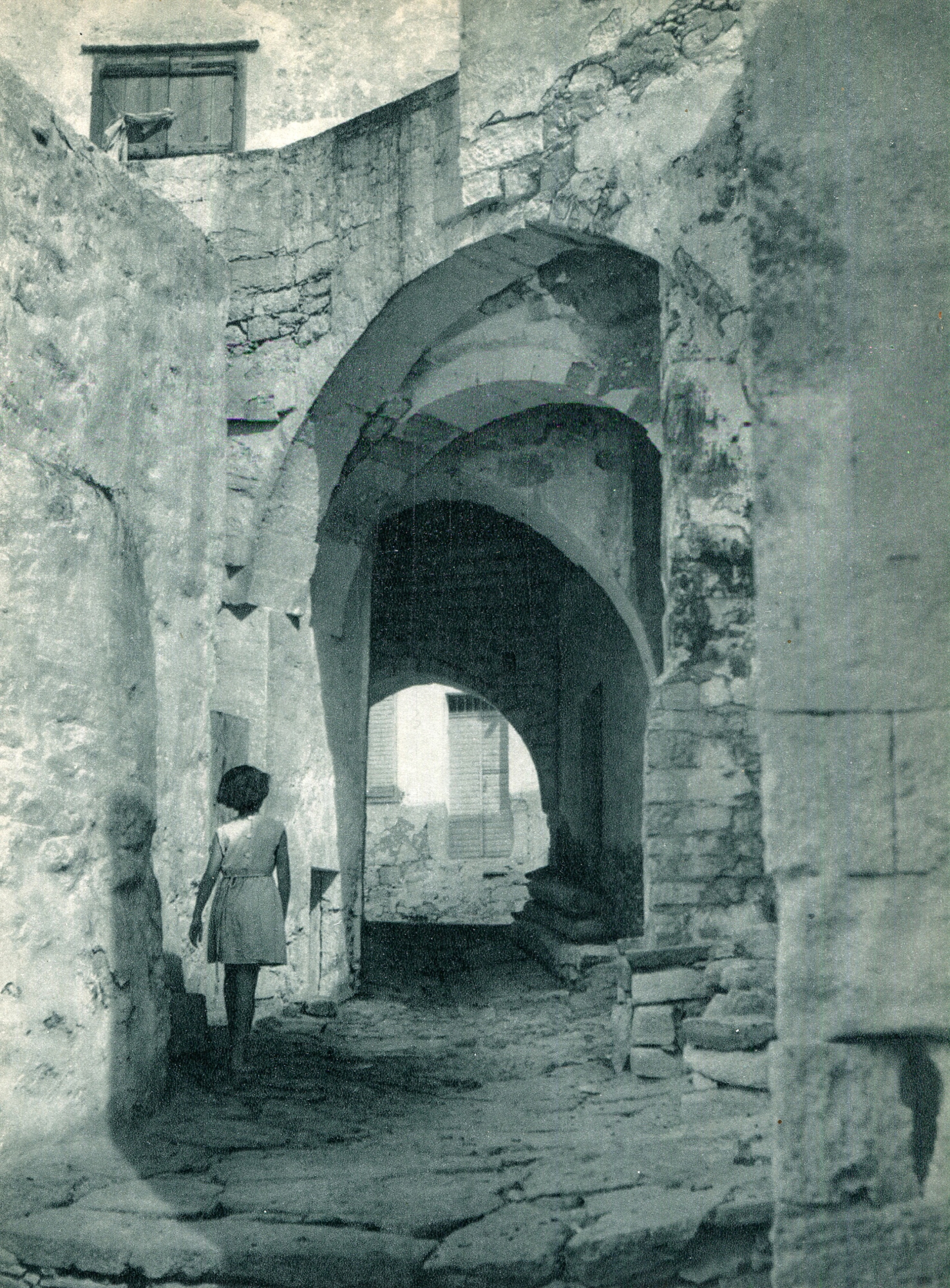
Once upon a time, the Cyclades were not yet discovered by tourists, and they have not yet discovered it. Pure and unsuspecting, they walked unsullied with their own island codes, their symbols and instruments, their lullabies and traditions, shaped by the waves and winds of the ages. They lived every morning with their daily promise, their daily work, immersed in the Aegean, its blessings and hardships.
Their connection with Piraeus was not easy, constant and everyday, as it is today. Even the capital city of Ermoupoli used wooden trucks to transport goods to and from Piraeus, while in most of the Cyclades the lack of marinas meant that mail would dock at ports and passengers would travel to the coast for lunch. There were also small ports to which ships of the line did not approach, only steamships. However, the onslaught of tourism began in the 1960s. And with it, irreversible changes.
A publication published at the time reflected this juxtaposition between the innocent authenticity of yesterday and the promise of enrichment from a future visitor, a photo album that today is an invaluable testament to how the Cyclades still stood at this critical moment in their historical journey. . It was called “Cyclades” and was part of a series of travel books published by “M. Pehlivanidis & Co.” under the heading “You met Greece”. As the publishers themselves write in the colophon, the series “represents the archaeological treasures and endless natural beauties of Greece, with descriptions specially written by our selected authors, with over a hundred wonderful photographs by the most famous Greek artists and photographers.”

Other books were published in the same series. Same design, same style. For Athens, for Tinos, Corfu, Thessaloniki, Epirus and other places in Greece. Today, they are all rare and hard to find, forever forgotten in second-hand bookshops and fleeting, hidden in personal collections. And yet we can imagine them standing, printing diamonds all together, behind the window of Atlantis, in the bookstore of the Pehlivanidis brothers, in that historic building on Koray Street in the center of Athens, perhaps among other small typographical masterpieces. of the same house: well-printed comics, children’s books with excellent illustrations, “Classic Illustrations”, detectives by Giannis Marie or magazines on various topics, such as “Thesauros”. With the University’s urban traffic constantly echoing nearby, they would probably look like tickets for a trip to distant and exciting but unexplored places. These books have really given a colorful, popular, “popular” face to many of the country’s tourist attractions.
The first volume in the series was dedicated to Tinos and featured an orange cover. In the same logic as the “color coding” the entire series was designed: the Corfu volume had a red background, the Argolis dark green, and the Cyclades dark blue, Aegean. Their artistic direction was directed by the Athenian artist Kostas Dimitriadis, one of those writers who were also cartoonists. His books on Athenian themes, such as The Old Quarters and The Athens We Lived in, are published by the Estia Publishing House, decorated with his drawings.

Flipping through the pages of the Cyclades, we embark on an impressive photographic journey through Greece of the time (published in 1960), and the photographers are all the holy monsters of the history of Greek photography. High-quality printed in the then new gravure printing technique of the publishing house, their frames seem to be born inside these sheets of paper, leafing through which, we become participants in a magical parade of landscapes, portraits and precious evidence of everyday island life of another era that has irretrievably gone.
Rare photographs from a priceless album called Cyclades, published in the 60s by M. Pehlivanidis and Co.
Image captions are heavy: Maria Chrusaki, Spyros Meletsis, Dimitris Charisiadis and Pavlos Milof offer us a series of images that seem unreal. Evidence from incredible places and times, they look like they belong in the realm of fantasy.
A special place among them is occupied by the melancholic poetry of Maria Chrousakis (1899–1972), who burrows into the stone streets of Kimolos and the castle of Sifnos and finds there lonely female or child figures walking silently in a setting where tourism looks like an aggressive visitor from a threatening future. Her gaze intoxicatingly glides over the cobblestones flowing like rivers from Ano Syros to Ermoupolis and reaches the courtyard of the house of the poet Aristomenes Proveleggiou in Exampel on Sifnos. Scattered among Chrusaka’s magical images are the wanderings of the publication’s other great photographers, such as in Spyros Meletzis’ captivating shot of three fishermen from Andrio lounging at a tavern table on Nibori’s sandy beach. The publication, however, originates from an eleven-page foreword by writer-journalist Vassilis L. Kazantzis. Few people recognize his name today. Perhaps one of the elders will remember how he wrote for years in Icones and Epikaira in the 50s and 60s under the pseudonym “index” and how he was one of the first journalists of Greek television, when her first steps were in the experimental , at an exhibition in Thessaloniki in September 1960, she presented Aliki Vougiouklakis to the public. Kazantzis was also a member of the British Council and a prolific translator. He was the second husband of Thassos Kavadias, also a translator and actress.

His intricate lyrical composition in the Cyclades by the Pehlivanidis brothers is an unknown treasure of our travel literature. Together with superb images by great photographers and an edition made with such attention, technique and love by great publishers, it is an artistic meeting of the creative giants of the time and an elegiac ode to the lost innocence of the Aegean. An ode that even today, sixty years after its creation, still seems timely and relevant.
The following words of the great writer Vasilis L. Kazantzis from his preface to the edition summarize him intuitively, insightfully, but, above all, very touchingly: he does not yet make a man. And when he did, he probably had no idea where he was buried and where his waking mind would take him. But now, in our years, when we have connected the oceans and connected our earth with the stars, these Cyclades will soon take on a different look. Before we imagine things as they will be tomorrow, let’s enjoy them as they are now.”

Source: Kathimerini
James Springer is a renowned author and opinion writer, known for his bold and thought-provoking articles on a wide range of topics. He currently works as a writer at 247 news reel, where he uses his unique voice and sharp wit to offer fresh perspectives on current events. His articles are widely read and shared and has earned him a reputation as a talented and insightful writer.